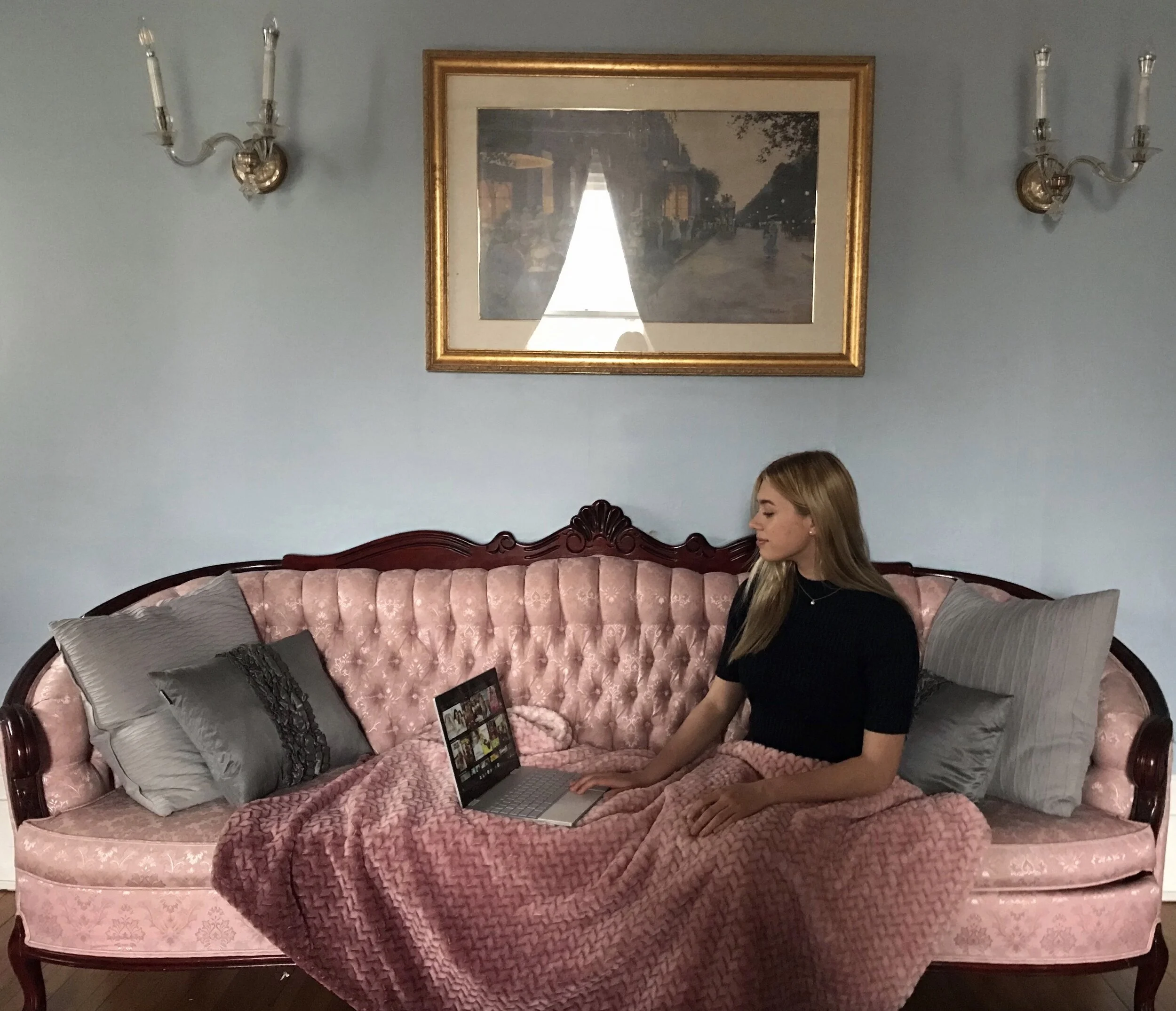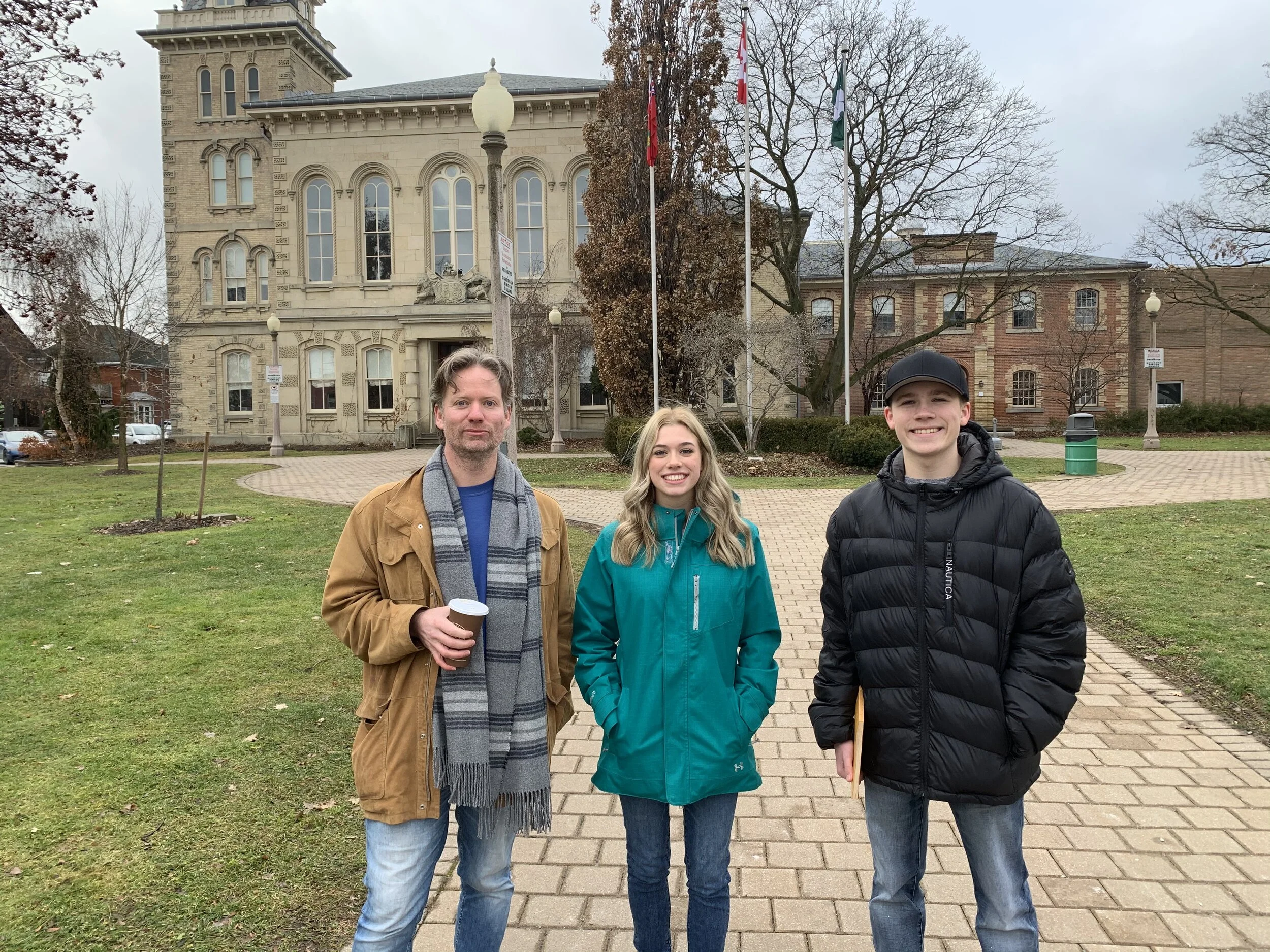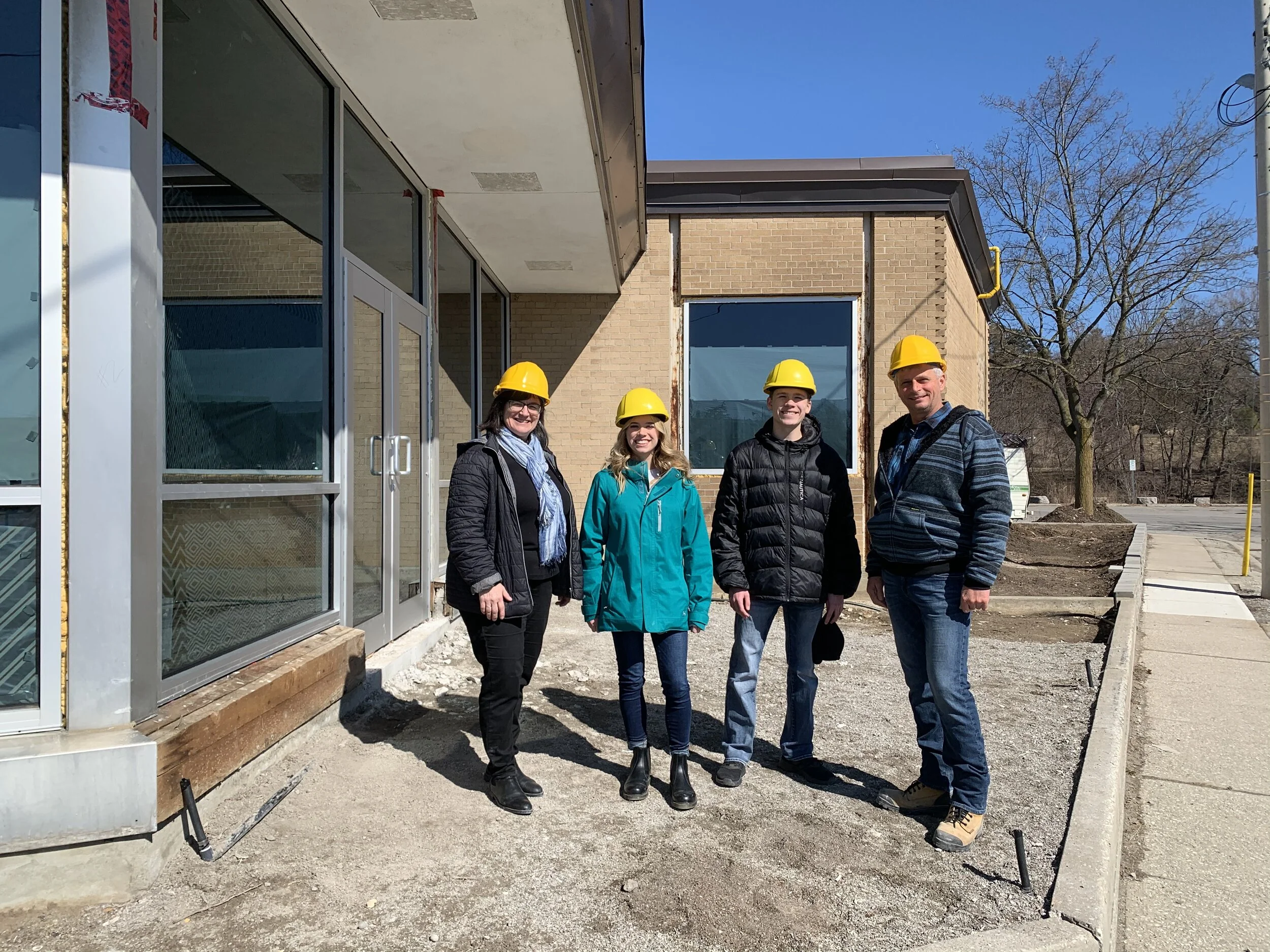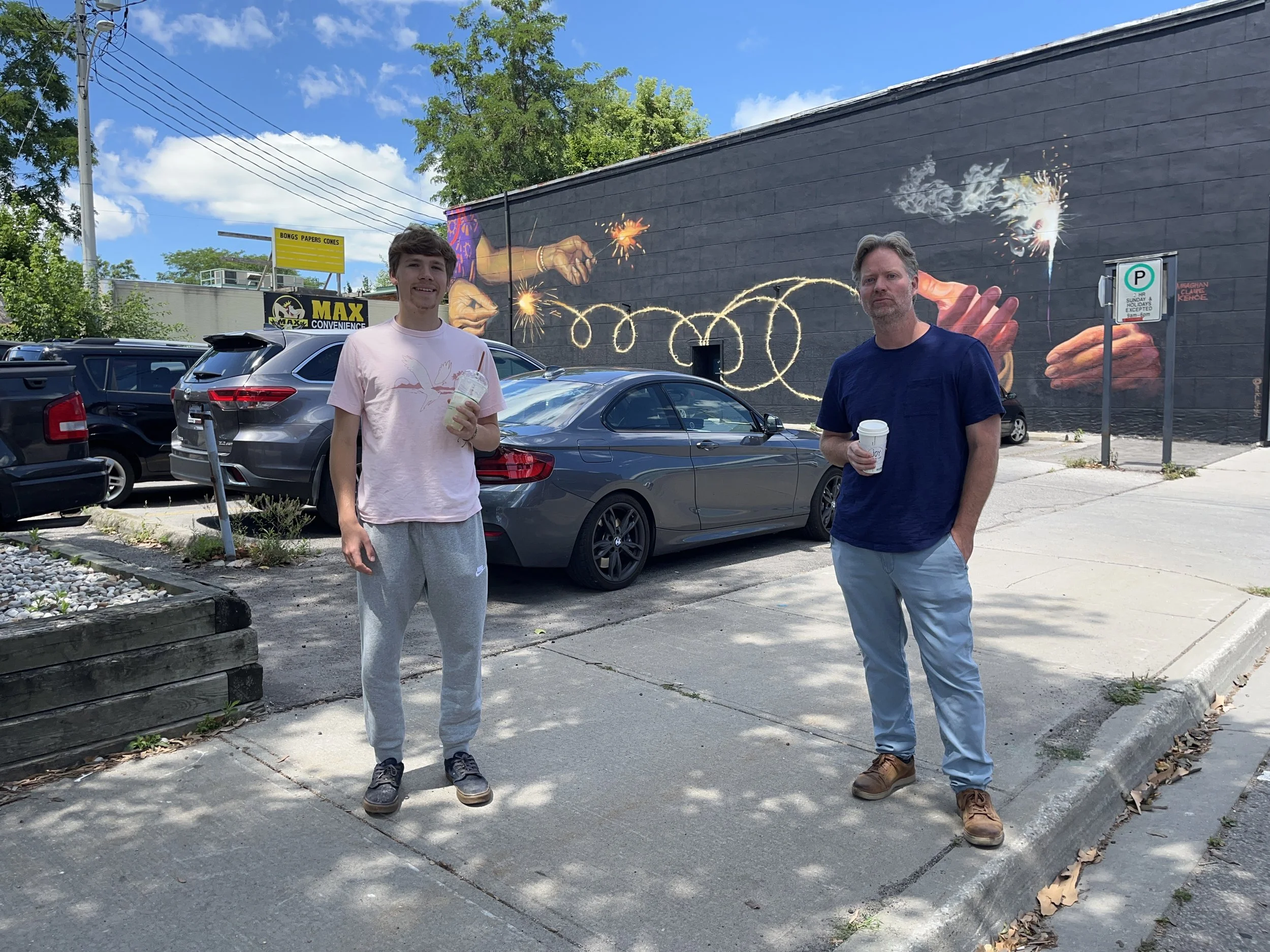The Teenage Perspective on Downtown Simcoe in the Time of COVID-19
Hayden Miller-Cluckie is one of our teenage staff members at young & free press. He is currently in grade ten at Simcoe Composite School, and has an interest in tourism and economic development.
This is an extraordinary time to write about cities and towns. The COVID-19 pandemic is forcing everyone to reconsider how we use public spaces. There is so much uncertainty. Right now, the phrase ‘physical distancing’ has taken over, specifying the need to keep at least two metres away from others. For the immediate future, physical distancing is a necessity; if we are able to ‘flatten the curve’ of the pandemic, perhaps this will remain only as a guideline or recommendation. Life will be different, though. Post-pandemic, what will public spaces be like?
Our team at young & free press loves exploring downtown areas and figuring out what makes these places hum. Some are well-maintained, distinctive, and busy, while others are run-down, dull, and vacant. We see a lot of opportunity in both cases. Downtown areas have traditionally been the main commercial and cultural centres of a community, although in the past few decades this has changed a lot. Much of this activity first shifted into malls, and then big-box retail hubs. The interesting thing is that the identity of a city or town is still built in downtown areas. When we travel somewhere, we want to find what is unique about a place, and typically this is discovered in the downtown, or possibly in certain neighbourhoods in larger cities.
For anyone living in Norfolk County, we know that there are some nice shops, restaurants and cafés in downtown Simcoe, but at the same time there are lots of empty storefronts and neglected areas. Our team has been working with the Downtown Simcoe BIA to improve the situation, and we were getting ready to roll out some fun rejuvenation projects this spring including more public art, colourful seating, and new events. With the pandemic, all this work gets paused for a while, which is unfortunate. At the same time, we can take this moment to think further about what the downtown might need in the future.
Cam Carter, Chair of the Downtown Simcoe BIA (back left), stands alongside Hayden Miller-Cluckie and Maddie King of young & free press. Recently the BIA purchased some bright, colourful Muskoka chairs to add to the downtown area for summer 2020. Our team at young & free has been working in collaboration with the BIA to develop new projects and events for downtown Simcoe. Unfortunately, the COVID-19 pandemic has forced the postponement of all these plans for the time being.
I want to look at this from the teenage perspective. As important as it is to draw in local families and tourists, there is a special challenge in trying to attract teenagers downtown. The teenage population represents the future generation, and if a community wants to thrive over the long-term, it is imperative to give teenagers a reason to care about the place, some incentive to stay or come back after leaving for post-secondary education. This seems like an important step toward ensuring a resilient, prosperous community.
Before the pandemic, teenagers did not spend much time in the downtown. Teenagers would rather go to the fast food restaurants on the Queensway than travel into downtown Simcoe. For a teenager, there needs to be three things in a downtown to get us to go there: first, good, cheap food; second, exciting areas to hang out; and third, reasons to walk or bike and explore the streets.
Every downtown should reflect the identity and determination of the people who live in the city or town. In a sense, the downtown is a living example of the will of the community as a whole – if the urban core is boring and run-down, what does that say about the people and the municipal government? On the flip side, once we see entrepreneurs start to occupy the spaces downtown, and the artists begin to influence the culture, there is hope, and more people get involved.
I think that a downtown should be a community space where everyone can come together and feel represented. Inclusivity matters. For Simcoe, this means local business owners, families, farmers, seasonal workers in agriculture, Fanshawe College students, young professionals, skilled tradespeople, and yes, teenagers. We should have a downtown that is colourful, vibrant, and filled with things-to-do. Instead, we are faced in downtown Simcoe with tons of empty stores, decaying buildings, limited greenspace, and a distinct lack of foot traffic (with the notable exception of the seasonal workers on Thursday and Friday nights throughout the summer).
Andrew Gunn & Maddie King of young & free press checked out the Taste of Latin food truck on Robinson Street in downtown Simcoe back in fall 2019. Thousands of Temporary Foreign Workers come to Norfolk County every year to work on farms, and add a distinctive energy to downtown Simcoe on Thursday and Friday nights during the growing season. The COVID-19 pandemic has caused considerable challenges for the agriculture sector, including the issue of how seasonal workers will be quarantined after arriving in Canada and how ‘physical distancing’ will be maintained in on-farm accommodations.
There are certain areas in downtown Simcoe that are particularly empty – for example, the district bordered by Argyle, Culver, Pond and Victoria streets seems almost abandoned. The downtown does not feel very welcoming or engaging, and certainly struggles to draw in people. It is important to note that what I am describing here is the situation before the pandemic! Now, we recognize that some small businesses may be forced to close. This could be another real blow to downtown Simcoe.
Having said that, this crisis could present an opportunity. There are some great spots downtown. Joy Bakery & Café, Salinas Bakery, Ferrera, and Serafina stand out as nice spots to stop for coffee or a bite to eat. Groundswell Coworking has built a fun vibe and draws lots of young entrepreneurs together. There are interesting shops like Melinda’s Enchanted Cottage and Sloths and Molasses. Early in March, we had the opportunity to tour the new Riversyde 83 facility, which should be a great community resource centered around food and education. There is a new building under construction at the corner of Robinson and Talbot that looks great. The plans for the new Indwell facility on Norfolk Street South are encouraging. Most importantly, there are lots of friendly people, too, and many who care about the future of the downtown.
Andrew Gunn, Maddie King, Alex Popen, Emily Stage and Hayden Miller-Cluckie of young & free press inside Joy Bakery Cafe in downtown Simcoe.
Early in March 2020, Maddie King and Hayden Miller-Cluckie of young & free press toured the exciting new Riversyde 83 facility in downtown Simcoe alongside coordinators Virginia Lucas & Eric Haverkamp. Once fully renovated, the site will feature a teaching kitchen, event spaces, as well as a cafe and marketplace.
Looking at downtown Simcoe now – right now, from the pandemic-perspective – what can we imagine for the future? How can we start drawing in more people? How can teenagers be engaged and help to co-create the downtown?
Before COVID-19, we saw some efforts and appreciate what people were doing. The Norfolk County Public Library started to run regular teen movie nights, and met with a number of teenagers to ask what would bring them into the library. Heather King, the CEO of the Library, seems very open to promoting programs for youth. Other groups like the Norfolk County Youth Council have been putting on events targeted toward teenagers. The Norfolk Musical Arts Festival is aimed at teens. All of these things help to get young people involved locally, but what we are really after is something more. The downtown needs a consistent vibe.
How do we develop an inspiring brand for downtown Simcoe? I would suggest three things to start. First, we need our leaders to step up and set the tone. We know that our Norfolk County Council and staff have lots of things on-the-go, but leadership matters and we need elected representatives to promote the downtown aggressively and provide funding for transformative projects. This does not necessarily mean a lot of money, just strategic money. Second, we should set the artists loose and provide lots of opportunities to shift our arts and culture outside, giving people things to see year-round and great photo-spots for social media. The murals that have started to pop up downtown are great signs of the consistency that the area needs, and generate a sense of place and identity, too. Third, we have to avoid always waiting for the perfect fix, like some massive new development. There is nothing wrong with prototyping ideas or events and seeing how the community responds. We think that the wide open concrete landscape in the east part of downtown by the Lynn River could be the site of some cool events. Eventually, perhaps this could be redeveloped into a high-density residential area with lots of food & drink options and resources for artists, too, but for now, the County (which owns much of the land) could work with community partners to activate this area. As the current pandemic situation starts to get better, we could look at ways to bring people together gradually, like with a temporary drive-in movie theatre in one of the parking lots catered by local take-out restaurants.
Artists have helped to inspire a new vision for downtown Simcoe. Andrew Gunn & Maddie King of young & free press stand by the stunning mural by Josh Mangeshig Pawis-Steckley in the alleyway off Robinson Street.
Hayden Miller-Cluckie and Emily Stage of young & free press explore downtown Simcoe at night … we love the gorgeous mural by artist Robyn Lightwalker in the background.
Another way that we could really make a difference is to start thinking of Simcoe (and all downtown areas in Norfolk) as part of ‘Ontario’s Garden’ – after all, this is the branding that the County uses to describe the whole community. We recognize the significance of this agriculturally, but what is the urban dimension of the brand? It is irrefutable that Simcoe has deep ties to agriculture historically and culturally, which is why it is bewildering that the downtown has so little green-space and a lack of urban gardens. Adding gardens and even more flower boxes on the sidewalks could make a real difference. Many teenagers are very passionate about climate change, and marketing eco-friendly initiatives like cycling paths and bike-sharing programs in the downtown could attract a whole new audience. Community gardens could be helpful for local food security. This requires a bit of innovative landscaping and can be a cost-effective way to attract people to the downtown, and really show visitors that Simcoe is part of Ontario’s Garden, too. Perhaps some vacant buildings could become indoor growing facilities. We love the idea of rooftop gardens, too. To make a big leap: imagine a park-space that doubles as an urban orchard with walkways lined with apple, cherry and pear trees! Yes, fruit trees require maintenance and have to be sprayed from time-to-time, but this could be such a distinctive feature for the community. Little by little, Simcoe could become ‘Ontario’s Garden Town’, and look for every opportunity to add more plants, flowers and trees.
One area really sparks our imagination. The County recently announced the closure of the building on Pond Street that housed the Simcoe Seniors’ Centre, and for good reason – the structure is decaying, and apparently there may be some environmental concerns on the site. We hope that the County considers inviting proposals for the property, and then works with private sector partners to redevelop this area into a residential and community space. The close proximity to Norfolk Street means that any development in this area could really boost downtown businesses, yet the site is far enough away from the main commercial area that this is a perfect spot for apartment buildings, green-space, and maybe a farmers’ market or food-truck hub, too. The old red brick building was constructed in 1891 and represents some of Simcoe’s industrial history; it is a building worth preserving and rejuvenating, if possible. We think this whole neighbourhood could be really cool. Maybe this is one part of the community that teenagers could help to co-create.
Hayden Miller-Cluckie, Emily Stage, and Maddie King of young & free press stand on Pond Street in downtown Simcoe. This is an interesting part of town & we see huge potential for the area.
The COVID-19 pandemic is alarming and upsetting, and as the number of cases and deaths continue to rise, everyone will feel the impact in some way. We have all been asked to ‘stay home’, or at the very least practice physical distancing. In a way, I think that this is making everyone realize the significance of public spaces, and how frustrating it is to lose the ability to meet and interact with others.
If downtown Simcoe is a canvas, there are lots of spaces still to paint. Why not make this beautiful? Why not invest in our community and give everyone who is living through this experience a reason to come together again in inspiring public spaces? Why not think of the essential workers among us – the doctors, nurses, farmers, truckers, waste collectors, grocery store workers, and more – and put up murals in downtown Simcoe to honour these people? It would be great if teenagers could be involved in this process and help drive these projects. We want downtown Simcoe to look better now and for decades to come.
Andrew Gunn, Maddie King & Hayden Miller-Cluckie of young & free press hang out in front of the beautiful Town Hall building & Library in downtown Simcoe.














